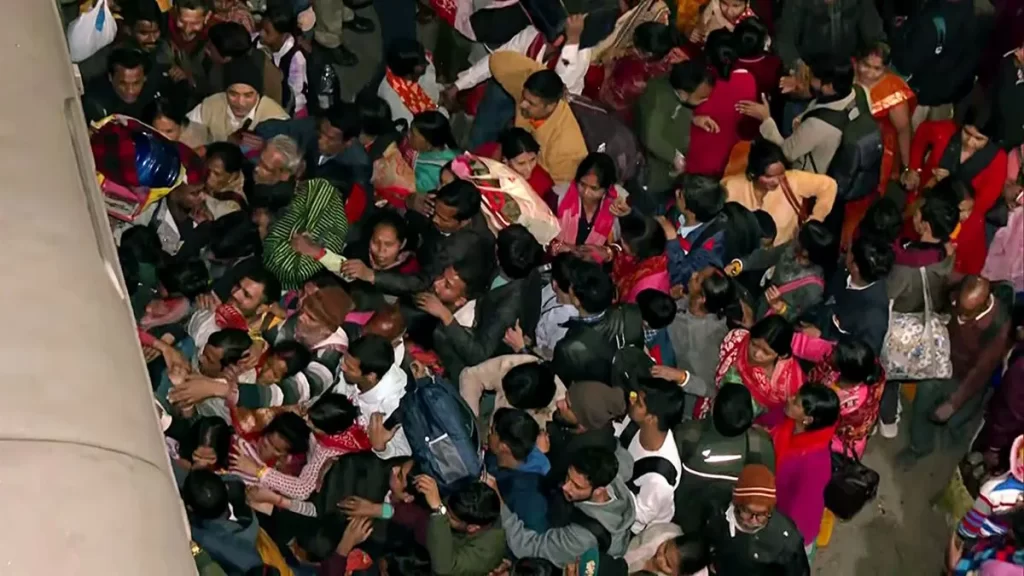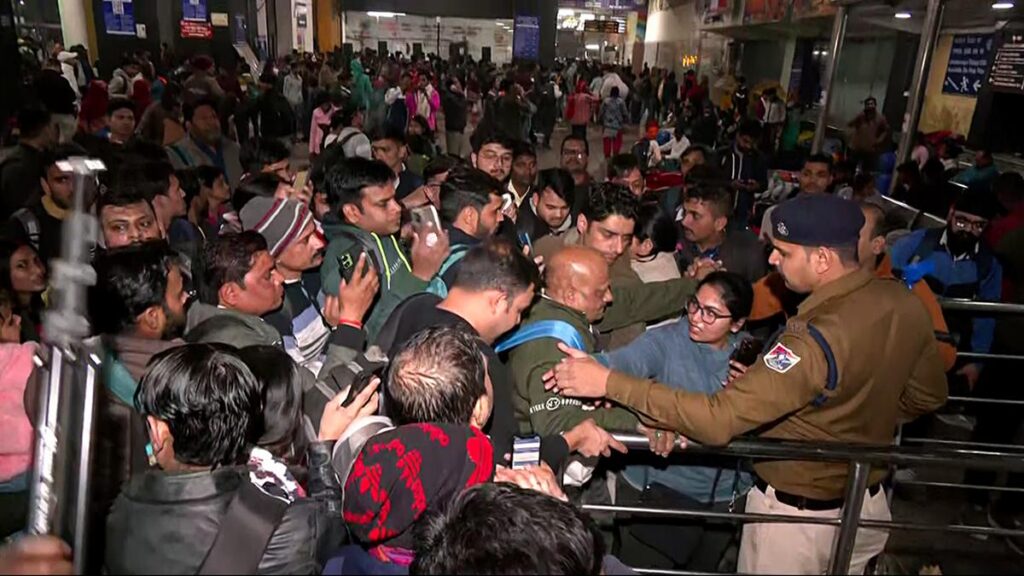One of India’s busiest transportation hotspots, New Delhi Railway Station, recently was the site of a tragic stampede that had several people hurt and caused widespread panic. The disturbance, which took place during rush hour, contributed to rekindling concerns about crowd management protocols, safety protocols, and the infrastructure in train stations across the country. Here in this blog, we will explore the facts surrounding the incident, discuss eyewitness testimonies, identify the potential reasons behind it, and talk about solutions to ensure such tragedies don’t occur again.
The Incident: What Occurred?
The New Delhi Railway Station stampede took place during heavy passenger rush, thousands of people rushing to get on their trains. First reports suggest that a sudden rush in the crowd, combined with miscommunication and failure to implement proper crowd control measures, resulted in a stampede.
A few witnesses recounted the terrifying moments during which the throng hurried to safety, others collapsing on the ground, while others were trampled and shoved in the crowd. The mass of people meant that rescue could not reach anyone in distress on time.

Eyewitness Accounts: A Glimpse into the Chaos
Some of the passengers at the scene recounted the horrifying moments of the stampede. Ramesh Kumar, a regular commuter, said: “I was on the platform when all of a sudden people began pushing from behind. Within seconds, things became out of control. I saw people collapsing and crying out for help.”
A further tourist, Sunita Sharma, described her experience: “I had two children with me. There was such a rush that I couldn’t hold on to them. One of the scariest times in my life was that.”
Railway workers and security forces arrived on the scene quickly, although it was too late. The injured received immediate medical attention after being hurried to adjacent hospitals.
Possible Reasons Behind the Stampede
Although the reason behind the stampede is still to be determined, there are a number of reasons that could have led to the tragedy:
1. Overcrowding
New Delhi Railway Station receives hundreds of thousands of commuters on a daily basis. With limited platform space and poor exit routes, overcrowding is usually a safety risk.
2. Inadequate Crowd Control Measures
Unlike airports, Indian railway stations overall do not have proper crowd management systems in place. The lack of good security personnel, poor queueing system, and no guided corridors may create havoc.
3. Misinformation and Panic
Poor communication about the arrival and departure of trains creates unwarranted panic. Many a time, people rush towards platforms after listening to last-minute announcements, and the result is overcrowding and even stampede.
4. Poor Infrastructure
Several Indian railway stations, like New Delhi, have outdated facilities that are incapable of managing the increasing passenger traffic. Staircases that are too narrow, short footbridges, and Inconvenient signboards are made worse by congestion during peak hours.

Impact of the Stampede
The incident of the stampede has had a lasting effect on passengers, officials, and policymakers. The following are some of the most significant effects:
1. Injuries and Fatalities
Minor bruising to serious fractures had been grouped by their injuries sustained by some of the passengers. Some even need serious medical care. Problems have to be raised about the emotional suffering that the stampede patients suffered.
2. Disruptions in Travel
The stampede led to serious delays and train schedule changes that impact thousands of commuters. Trains were delayed, and order had to be restored before business returned to normal.
3. Public Outrage
Both passengers and the normal public were incensed by the tragedy, and most of them asked if train managers had been trained to handle such situations. Messages for accountability and raising safety standards were all over social media.
Steps Taken by Managers
After the disaster, government powers and railway officials acted swiftly to rectify the situation and leave every future incident. Some of the important steps were:
1. Enhanced Security and Crowd Control Measures
The deployment of more security personnel and the installation of crowd control mechanisms were the first measures adopted. Additional Railway Protection Force (RPF) officers were deployed at susceptible areas to efficiently control the flow of passengers.
2. Infrastructure Development
Officials have assured to develop station infrastructure by adding more exits, improving signage, and enlarging staircases to allow for easy crowd flow.
3. Awareness Campaigns
Passengers were along with it taught about safe travel practices by announcements, posters, and online campaigns in order to cut down on panic and confusion at peak hours.
4. Integration of Technology
There are efforts to use technology to improve crowd control. Artificial intelligence-based surveillance, automated messages, and the use of cell phone alerts to improve passenger control of flow is being investigated.

Lessons Learned and the Road Ahead
The stampede at the New Delhi railway station is a grim reminder of the pressing necessity for improved safety measures in overcrowded public places. These are some important points to ponder:
1. Enhanced Crowd Handling Measures
Scientific crowd managing techniques, like designated waiting space, advance boarding procedures & real-time crowd measurement systems, must be implemented by the railroads.
2. Enhanced Infrastructure and Planning
The government must make investments to develop the amenities at train stations, like adding more staircases, broader platforms, and better ventilation systems.
3. Application of Technology for Safer Travel
Smart ticketing systems, AI-based monitoring, and large crowds can be efficiently managed by using automatic emergency response systems.
4. Public Awareness and Responsibility
It is the responsibility of the passengers to ensure its safety. Adhering to guidelines, refraining from unnecessary rush, and assisting the powers that to be maintaining order can make a big difference in minimizing risks.
